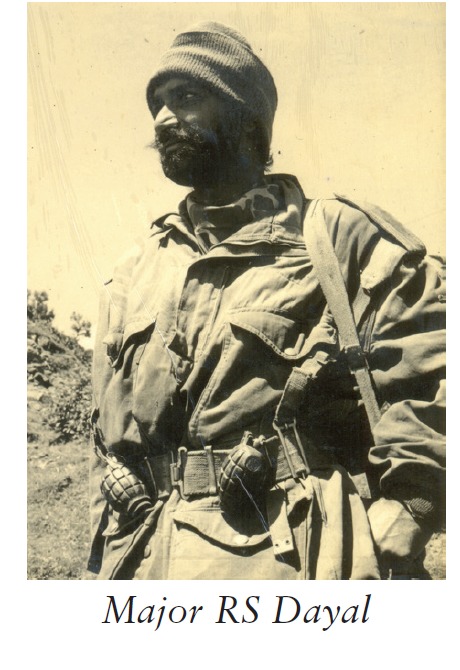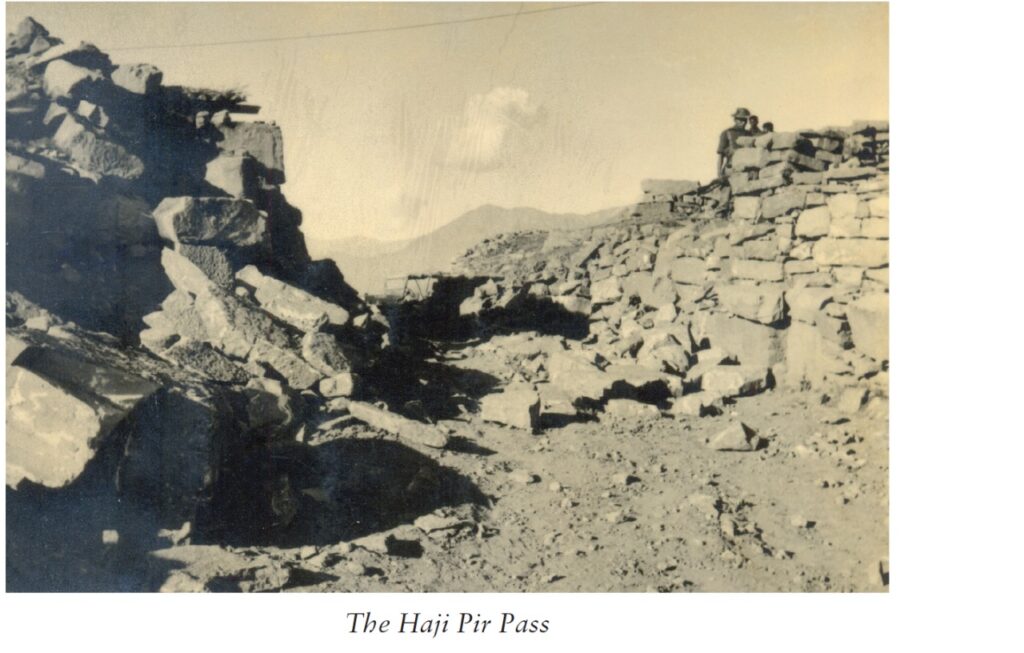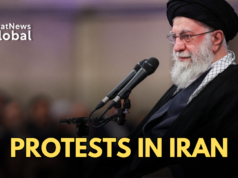NEW DELHI: In April 2013, military aficionados gathered at London’s National Army Museum voted the twin battles of Kohima and Imphal between the British Indian Army and the Japanese Imperial Army during April-July 1944 as Great Britain’s ‘greatest battle’ ever fought, beating Waterloo and Normandy—two other decisive victories in war for Britain—to second and third places, respectively. The voting was done by a select audience of military enthusiasts and not ordinary citizens. To that extent, it is subjective. But if the greatness of a battle is judged by its political, cultural and social impact as much as its military impact, Imphal and Kohima were really significant for a number of reasons, not least that they showed that the Japanese were not invincible and that that they could be beaten, and beaten well. The battles of Imphal and Kohima saw the British and Indian forces, under the overall command of Lieutenant-General William Slim, repel the Japanese invasion of India and helped turned the tide of the war in the Far East.
India has fought four major wars (1947-48, 1962, 1965 and 1971) and a local conflict in Kargil (1999) since its independence. Many heroic acts and decisive moments in the history of valour, sacrifice and team spirit displayed by Indian soldiers come to mind, but if there is one battle that can truly be called a turning point in the overall context of a war, the vote should go to the capture of the Haji Pir bulge under Operation Bakshi in August 1965. An important area for infiltration into Kashmir Valley and Rajouri/Poonch areas, the Haji Pir Pass is located on the Pir Panjal Range at 2637 meters (8600 ft) on the road between Uri with Poonch.
After the Army took a decision in the middle of August 1965 to go on the offensive and cross the CFL (Cease Fire Line) if needed, following large-scale infiltration into J&K, one juicy target beckoned: the Haji Pir Pass.
As Gen. Harbaksh Singh, then the Western Army Commander, noted: “Pak did exploit the peculiar configuration of the Cease Fire Line in the Haji Pir bulge, for launching the main influx of her infiltration campaign into the Valley. In addition to using this area for entry routes, huge stocks of arms, equipment and supplies had been built up at several places in the Bulge for speedy administrative support of various raider groups. The Haji Pir Operation was…intended to knock the logistic bottom out of the infiltration campaign as also to plug the entry routes of the raiders…”
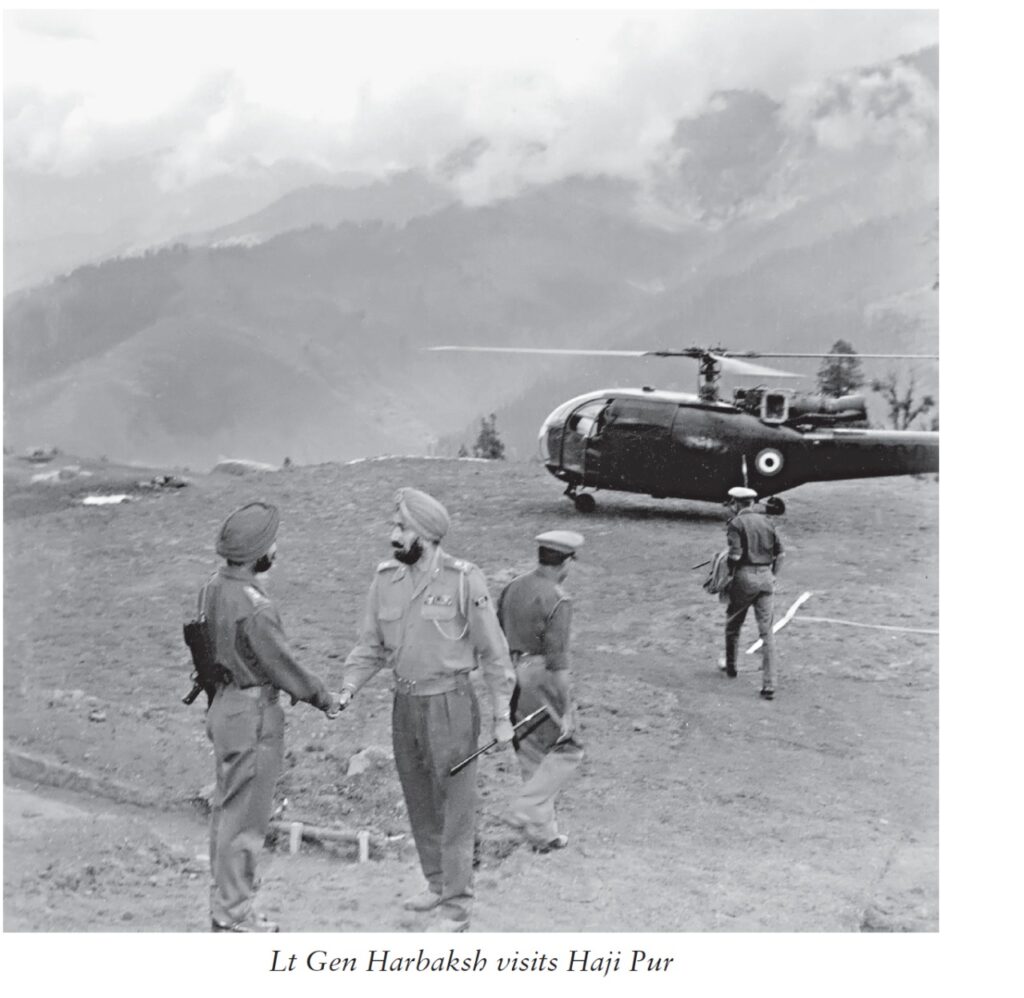
The pass had to be captured since it worked as a lifeline for the saboteurs operating in the Poonch area. It was dominated by three adjoining hill features—Bedori (3760 m) in the north-east, Ledwali Gali (3140 m) in the north-west and Sank (2895 m) in the north. The capture of these features was considered necessary for advancing on to Haji Pir pass. Bedori is about 4 km to the south of the CFL while Haji Pir Pass is about 10 km to the south-west of Bedori.
Capturing the pass was not going to be easy. Brig. ZC Bakshi, a veteran of the Burma campaign in World War II, was Commander of 68 Brigade which was drafted in from Srinagar and placed under the command of 19 Division headquartered at Baramulla. As the infiltrators started pouring into the Valley, the brigade was pulled into the conflict. Remembers retired Brig. Shamsher Singh, who was then a young Signals captain with barely two-and-a-half years of service in 1965: “On 4 Aug 1965, 68 Brigade was asked to take part in the investiture parade planned in Srinagar for 15 August. Even as we were practising for the event, we came to know on 7 August that infiltration had taken place across Pir Panjal. And sure enough we were put into action in Gulmarg two days later. Though the infiltrators had a tough time—no local support, no food, we were chasing them all over the place.”
As the anti-infiltration campaign picked up speed, there were fresh orders for the brigade. Recalls Brig. Shamsher: “Somewhere around 14-15 August—I was just a company commander, OC of the signal company of the 68 Mountain brigade with less than three years of service—I felt some lull in the operation. We were pulled back from Gulmarg to a place called Pattan. Around 18-19 August my BM (Brigade Major)—the lynchpin of a brigade who coordinates between the commander and the battalions under the brigade— told me: get ready for something bigger. The briefing (orders) took place at Rampur, the 161 Brigade HQ. We had nothing of our own paraphernalia. The original battalions under 68 Brigade were left behind where they were and we were given three brand new battalions: 1 Para commanded by Lt Col Prabhjinder, 4 Rajput, headed by Lt Col Sudarshan Singh (the same battalion which had captured Point 13620 and Black Rocks in Kargil in May that year) and 19 Punjab, commanded by Lt Col Sampooran Singh. Coincidentally, all three infantry battalion commanding officers (COs) were Khalsas. Even field regiment CO, Lt Col Shivdev Singh was a Khalsa and so am I,” Brig Shamsher reveals by way of an aside.
The COs met the Brigade Commander for the first time in the Ops room at Rampur! Brigade Commander was Brig. Bakshi–PVSM, MVC, Vrc, VSM, McGregors—perhaps the most decorated officer in the Indian Army ever but certainly at that time.
On 21 August, his opening lines in the briefing for the operation were: “Gentleman, since 1947 we have been cribbing that government does not allow us to attack, go into offensive but this time, we have been given a clear mandate to capture Haji Pir at any cost. Where I say at any cost, a civilian may means 100 per cent casualties but I as an Infantryman, say only when you have had 40 per cent casualties, come back to me otherwise press home. In WW II, after my company lost 40 per cent strength we were prevented from pressing further. I don’t want that when I fought in WW II, it means if you have 40 per cent casualty come back to me otherwise press home.”

“Ironically, our own battalion 6 Dogra was left behind in Gulmarg to mop up the infiltrators. So the plan was that D-Day would be 24 August. The attack was to be two pronged: Sank-Sark-Ledwali Galli (right) on night of 24 and capture it by 25 August morning. On left 19 Punjab was to capture Bedori by 9 am and Rajputs were to push through to capture Haji Pir by that evening. That was the plan. But as they say in Staff College, ‘gentleman, this is my plan, but if everything goes according to plan, there is something wrong with this plan.’ Sure enough on 24th evening it rained so heavily that it was going to be impossible to launch the attack. I remember, I was wearing a blue turban. Its colour drained on to my face. So much so that Brig. Bakshi, jokingly said ‘have you camouflaged yourself with the blue colour!’ Anyway, the attack was postponed by 24 hours.”
“We went in on the night of 25th. 1 Para was to attack Sank-Sar, 19 Punjab to launch an attack on Bedori. On 25th night, 1 Para surprisingly could not contact the objective as they were ‘day lighted,’ meaning they were exposed in the open. In the mountains you cannot launch a daylight attack so they were pulled back. Similarly, with 19 Punjab, which attacked Bedori but they could not go beyond Pathri. The conditions were bad because of previous day’s rain, the slopes slippery. So the position on 26th morning was: 1 Para is stalled, 19 Punjab is stalled. And Zoru (Brig. ZC Bakshi) is sitting on Rustom picket, contemplating his next move, when he got a call from his course mate Hardev Kler, then a G-1 from 19 Division told him, Bedori has already been captured. Zoru was surprised. I was sitting with him. He told Hardev Kler, it can’t be. Then Kler said I will put you through to 161 Brigade Commander. 161 Brigade Commander was patched through and he also told Zoru ‘I have captured Bedori, what’s the problem?’ Zoru was still not convinced. Still he took the 161 brigade Commander’s word and told 4 Rajput to go and occupy Bedori to consolidate and let 19 Punjab press ahead, since the ultimate objective was Haji Pir,” Brig Shamsher recalled.
Brig. Shamsher, now in his mid-seventies but still in possession of a sharp memory that recounts every moment of that momentous period, continues: “On the evening of 26, that is night of 26-27th, as 4 Rajput advanced towards Bedori, they came under attack. Surprised at Pakistanis still being there, Rajputs asked for artillery fire on Bedori. Zoru did not allow that since he was told it was already captured. In the bargain, Rajputs took casualties and were stalled at the base of Bedori. When Zoru informed GOC 19 Div, Maj Gen SS Kalaan about the situation on ground, Gen Kalaan lost his cool. The GOC told Zoru, in that case, ask the Rajputs to press on and capture Bedori at any cost since it has already been announced on radio that India has captured the peak! Zoru refused. He told the GOC, ‘Sir if I tell CO 4 Rajput now to capture Bedori, he will mutiny. One moment we tell them it is in our control, the next we say go and capture! This is not on.’ So the situation on 27th morning was: Rajputs were stalled, 19 Punjab was sitting around doing nothing. Of course 1 Para meanwhile had done all right. They were in Ledwali gali by the morning of 27th.”
For 1 Para getting to Ledwali Gali was not easy. The attack was launched at 2230 hrs on 27th night by B Company that followed D Company, which moved forward towards Point 9591 or Sank. The Pakistani troops rushed from their trenches and opened fire with MMGs, LMGs and other small arms. The Indians also opened up forcing the enemy back into the trenches. By 0430 hrs on 27th August, B Company had reached within 450 m of the Pakistani positions and formed up to charge frontally. In the daring platoon attack that followed, the Pakistani MMGs and LMGs were silenced. The Pakistanis were forced to retreat to Sar leaving 16 dead although they managed to evacuate 100-odd wounded soldiers. Despite the small tactical victory, the position was still not secure since a menacing fire from Sar continued to pin them down. So D company was tasked to clear that feature. It soon captured Sar and advanced to Ledwali Gali where the Pakistanis made their last stand to allow safe withdrawal of their remaining troops. B Company had meanwhile secured the surrounding areas.
Despite these victories against heavy odds, Haji Pir was still in Pakistani control. That’s when Brig ZC ‘Zoru’ Bakshi took, what Brig. Shamsher thinks was the momentous decision of the 1965 war—and took it unilaterally! As he narrated what Zoru Bakshi did that morning of 27th August 1965, Brig Shamsher’s eyes looking far back into the past, glowing with pride for being one of the prime witnesses to that historic decision.
He recounts: “A most historic and momentous decision was taken by Zoru in my presence. Very few can do that in any army, any era. After Gen Klan told him to take Bedori, and after 1 Para had reached Ledwali Gali, Zoru knew that the Pakis would have guessed by now that the thrust by the Indians was for capturing Haji Pir pass. Zoru knew the Pakis would have reinforced Haji Pir by now and sure enough they had, 18 Punjab was rushed in to defend Haji Pir on the night of 27-28th. But as the man tasked to capture the vital pass, Zoru knew he had to press on with the plan despite mounting odds and in spite of the express orders of the GOC to first capture Bedori.
“So Zoru asked CO, 1 Para, Lt. Col Prabhjinder, who can lead a commando style operation on Haji Pir. Prabhjinder nominated Maj. Ranjit Singh Dayal, who was given a Company plus for the attack. Before Dayal started his operation, Zoru told him in thet Punjabi: ‘Agar te jit liya Haji Pir to tu hero ban jayega, ne to meinu wah kaid kar lenge (If you win Haji Pir you will be a hero but if you can’t I will be arrested for taking a unilateral decision),’” Brig Shamsher remembers.
Maj RS Dayal, who rose to become a Lt General, was once again in the limelight in June 1984 when he was chosen—despite being a Sikh–to lead Operation Blue Star. But more of that later.
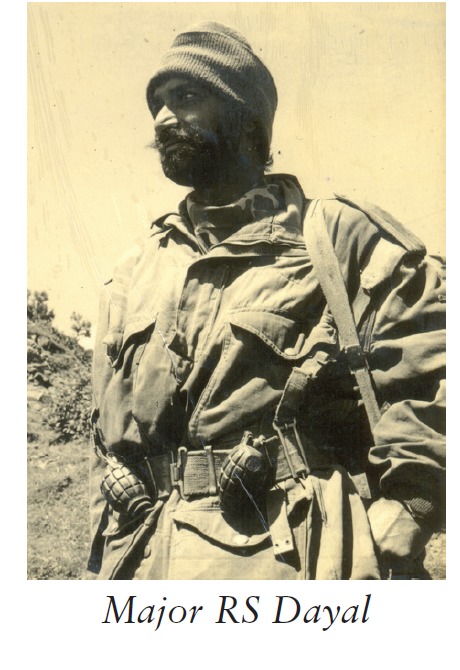
Maj Dayal was given a mixed column of A and D companies. He started the march to Haji Pir from Ledwali Gali around 1530 on 27th afternoon, descending to the Hyderabad Nallah along the spur. It encountered MMG firing from the western shoulder of Haji Pir. Small arms fire also rained down on the column from east of the pass. So the FOO (Forward Observation Officer) registered the two areas and brought down artillery fire to silence the two positions. The column then moved along the left bank of the Hyderabad Nallah alongside the hill, before beginning the ascent to the pass.
At about 1730, two hours after the column had started the march, heavy rain made movement very difficult. By 1900 hrs it was completely dark. But Maj Dayal decided to continue climbing towards the pass despite adverse conditions. They came across what looked like an abandoned house, which was actually a shelter for infiltrators. In a swift action, 1 Para troops captured 10 members of the Azad Kashmir militia—a kind of para-military force—one LMG and 10 rifles. The captured prisoners were gainfully utilised to carry the extra load of the column, mainly rations and fuel! As the troops reached the Uri-Poonch road, 10 km below the pass, it was already 0430 hrs on 28th August. Maj Dayal decided to give his troops a much-needed two-hour break, although they had to rest in pouring rain which accentuated the cold.
At 0700 hrs, the column resumed the march. In another two hours, it was barely 700 metres short of the pass. Pakistani troops perched atop the peak were surprised to see the column. They had perhaps thought that the Indians had abandoned the attack due to the heavy rain the previous night! As the surprised Pakistanis opened up with an MMG from the western shoulder of the pass and with LMG and other small arms from the pass itself, Maj Dayal had to think of outwitting them.
After assessing the Pakistani defence on the pass, Maj Dayal tasked two platoons to climb the steep spurs from the western side of the pass, silence the MMG and then roll down to the main defences. The supremely fit and confident paratroopers did the job exceedingly well, surprising the Pakistanis. As the rest of the column fetched up, the Pakistanis could not withstand the twin attacks and withdrew to a feature west of the pass.
By 1000 hrs on 28 August Haji Pir was in India’s control, thanks to the daring day light attack of the Paras under the bold leadership of Maj RS Dayal. It was to prove a major turning point in the 1965 war. The main infiltration route was now plugged from one side but more importantly the morale of the Indian army was now sky high following two major successes in Kargil and this one in Haji Pir against formidable odds. Remember these battle victories had come less than three years after the humiliation against China.
Capturing Haji Pir was however only partial completion of the overall plan. The Pakistanis were known to counter-attack swiftly, so Haji Pir and its surroundings had to be secured. As expected, the Pakistanis did counter-attack on 29th but it was repulsed by the Paras. To further consolidate their position, 1 Para captured Ring Contour on 30 August and the adjoining Point 8786 a day later.
For his act of courage, imagination and leadership, Maj RS Dayal was awarded the Maha Vir Chakra.
(Excerpted from the author’s book 1965: Turning the Tide published in 2015)
Nitin A. Gokhale is a media entrepreneur, one of South Asia's leading strategic affairs analyst and author of over a dozen books so far on military history, insurgencies and wars.
Starting his career in journalism in 1983, he has since led teams of journalists across media platforms.
A specialist in conflict coverage, Gokhale has covered the insurgencies in India’s North-East, the 1999 Kargil conflict and Sri Lanka’s Eelam War IV between 2006-2009.
Gokhale now travels across the globe to speak at seminars and conferences, and lecture at India’s premier defence colleges. He has founded three niche portals, Bharatshakti.in, stratnewsglobal.com and Interstellar.news.


